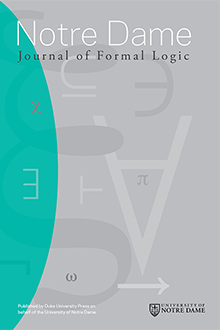Joel David Hamkins, Wojciech Aleksander Wołoszyn
Notre Dame J. Formal Logic 65 (1), 1-37, (February 2024) DOI: 10.1215/00294527-2024-0001
KEYWORDS: modal logic, Set theory, model theory, graph theory, potentialist system, maximality principle, Kripke model, S4.2, S5, countable random graph, logical expressiveness, 03B45, 03C10, 03C52, 03C55, 03C62, 03C65, 03C80, 03E10, 03E20, 03E47, 03E65, 05C15, 05C20, 05C38, 05C40, 05C80
We introduce the subject of modal model theory, where one studies a mathematical structure within a class of similar structures under an extension concept that gives rise to mathematically natural notions of possibility and necessity. A statement φ is possible in a structure (written ) if φ is true in some extension of that structure, and φ is necessary (written ) if it is true in all extensions of the structure. A principal case for us will be the class of all models of a given theory T—all graphs, all groups, all fields, or what have you—considered under the substructure relation. In this article, we aim to develop the resulting modal model theory. The class of all graphs is a particularly insightful case illustrating the remarkable power of the modal vocabulary, for the modal language of graph theory can express connectedness, k-colorability, finiteness, countability, size continuum, size , , , , first ℶ-fixed point, first ℶ-hyper-fixed point, and much more. A graph obeys the maximality principle with parameters if and only if it satisfies the theory of the countable random graph, and it satisfies the maximality principle for sentences if and only if it is universal for finite graphs.

